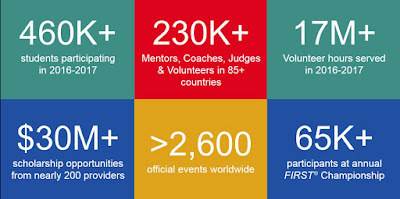
Education is supposed to be a vehicle
for economical mobility, but now a days this is a daunting undertaking. We tell
our children that no matter your race, gender, our wealth, in America you can
become anything you want to be. Unfortunately, not all economically
disadvantaged students believe this. Outside of school, children of
disadvantaged households may become discouraged by circumstances out of their
control. For example, only 12 percent of poor children live in two parent
households as compared to 60% for all children.
Households with children in poverty may experience unstable parent
employment, housing instability, insufficient access to adequate health care,
or food insecurity. Poor children are
also more likely to start school at a disadvantage. There is a 27 percentage
point gap in school readiness between poor children and those from moderate or
higher income families. A child from a high-income family will experience 30
million more words within the first four years of life than a child from a
low-income family. This gap does nothing but grow as the years progress,
ensuring slow growth for children who are economically disadvantaged and
accelerated growth for those from more privileged backgrounds. In addition,
two-thirds of America’s children living in poverty have no books at home. How can educators overcome these
circumstances?
As a recent teacher in a high poverty
elementary school in the Baltimore area, I have witnessed first-hand how
poverty, parental unemployment, and a lack of trust have driven children to
lose hope in their chances for a better life. Moreover, some of my school’s economically
disadvantaged students regularly avoid taking academic risks to “save face”. They will do anything to not be embarrassed by
their weaknesses in performing schoolwork. I have had many private
conversations with youngsters in efforts to convince them that such tasks worth
trying and that they will only improve by putting forth effort.
Students can be successful when they
experience rigorous instruction which promotes a growth mindset, resilience,
and it relevant to their needs (see http://www.theatlantic.com/magazine/archive/2016/06/how-kids-really-succeed/480744/). When
students face and accomplish meaningful, challenging problem-based learning,
they grow in confidence and grit. I have
witnessed how robotics allows students to accomplish great things and develop
more positive attitudes toward not just Science, Technology, Engineering and
Math (STEM) but also school in general.
Simultaneously, robotics provides
important career and life skills which will make students globally competitive.
Robotics provides a foundation for the type of thinking required in the 21st
century (see http://www.p21.org/ ). It promotes creativity, critical thinking, and
collaboration.
One reason
robotics is so successful is that there is less fear of taking a risk. Everyone starts with a level playing field
because in elementary school nobody comes in knowing how to program a
robot. Students who may not excel linguistically
often shine when working with their hands with robots. If a robot doesn’t work,
then they tinker with it until it works.
The moment of “failure” is transformed into an opportunity for learning. How does this work?
Rather than
artificially boosting esteem through superficial praise, real agency is earned
by overcoming rigorous challenges. We present tasks of gradually increasing,
but manageable levels of difficulty. The
instruction provides students with alternative paths to learn and demonstrate
understanding. By holding high expectations, but providing multiple pathways to
meet such expectations, students are able to conquer tasks by applying their
own unique talents. With properly scaffolded tasks and just-in-time coaching,
students rapidly see success. This methodology promotes agency.
At the
conclusion of our robotics team tournament, we held a debriefing. I asked students to reflect on their
experiences. Paraphrased comments included “If it doesn’t work at first, you
should keep trying different things”, “Initially, I was afraid to present to
the judges, but I learned that I like it and am good at it”, “It doesn’t matter
if you win, as long as you learn something and have fun”, “I’m good at being a
leader”, “Teamwork makes it easier to get the most points”, “When it is hard to
do something, it feels when you finally make it”, and “When can we do more?”. I
couldn’t have said it better myself.







